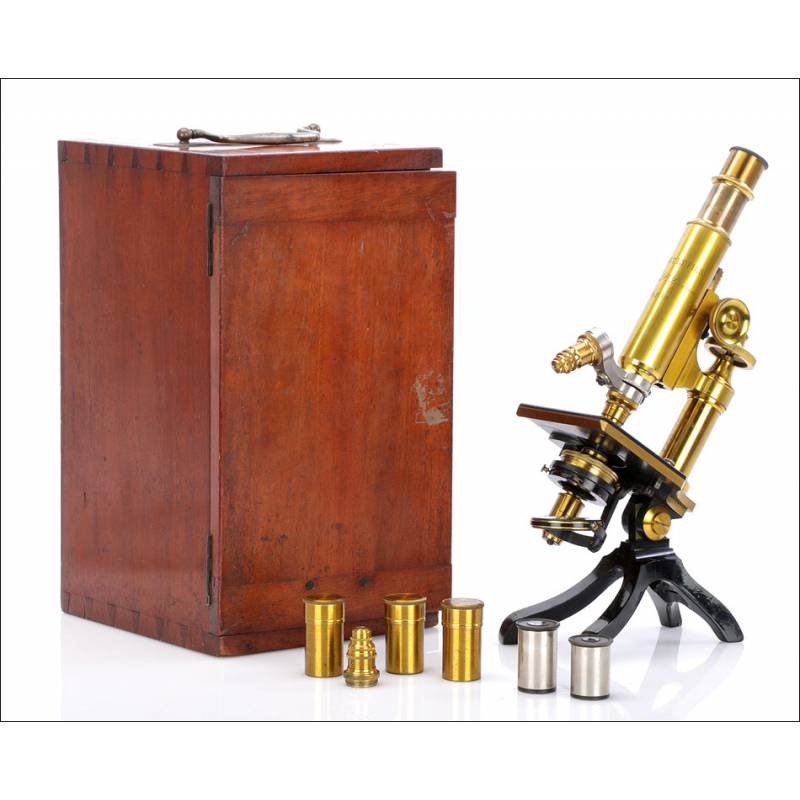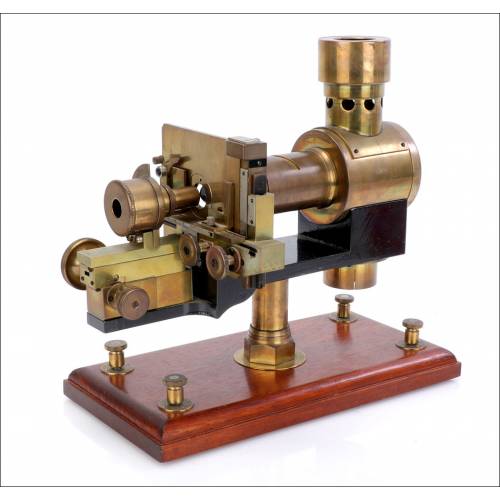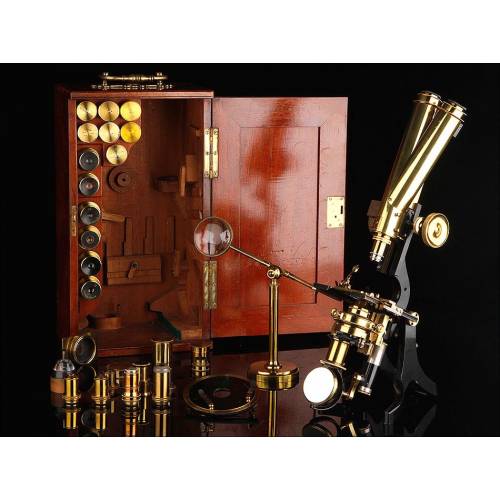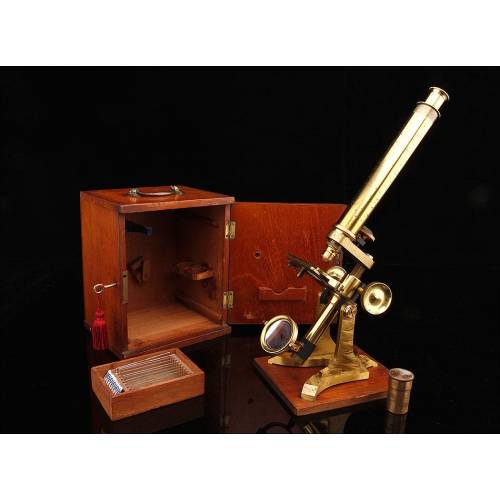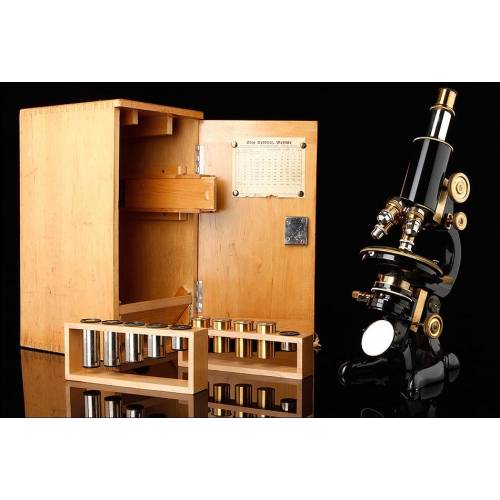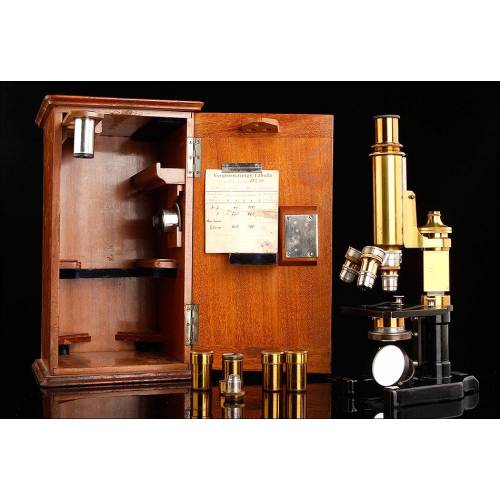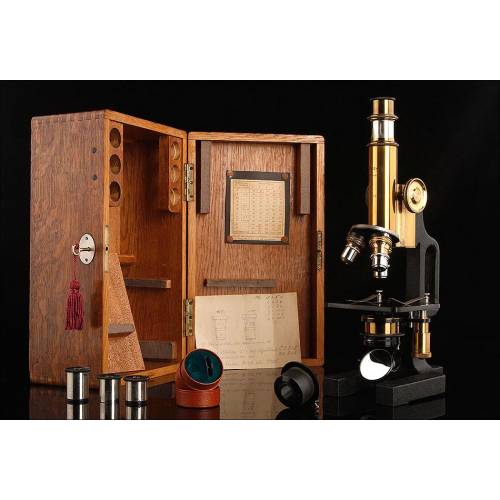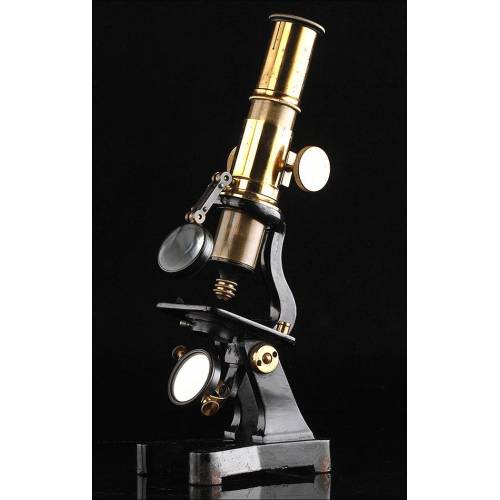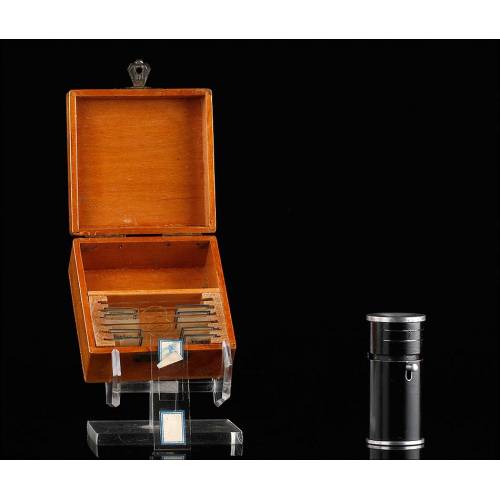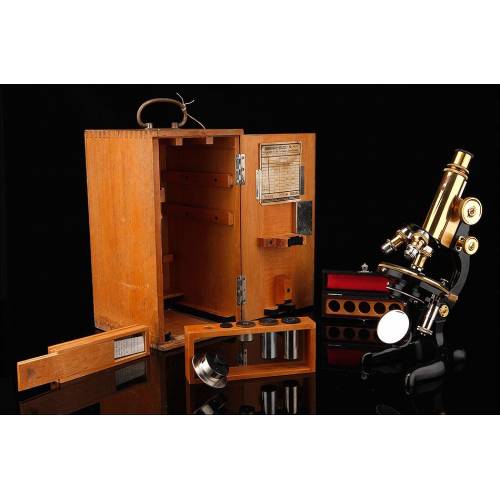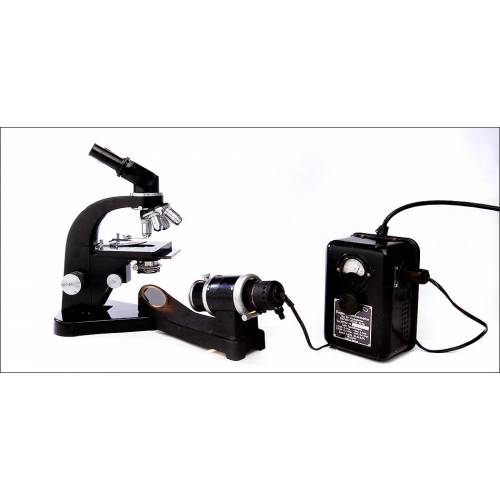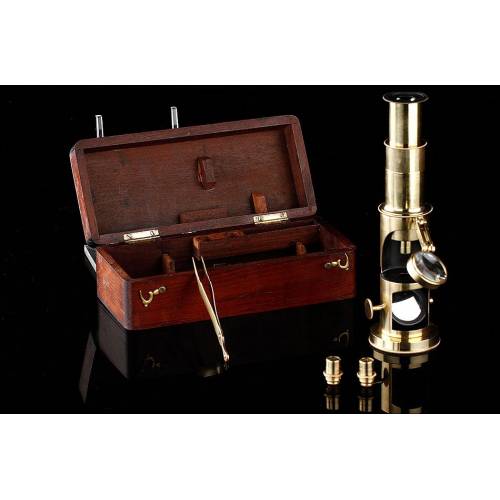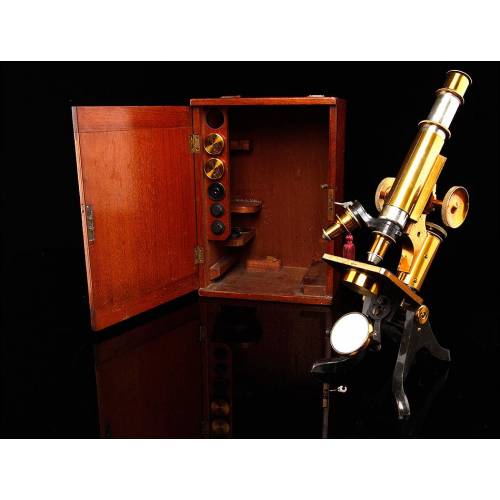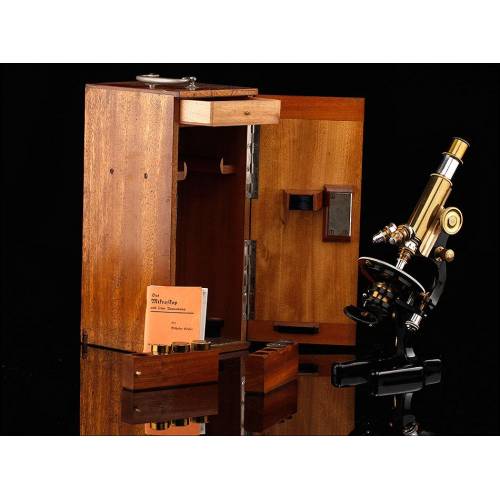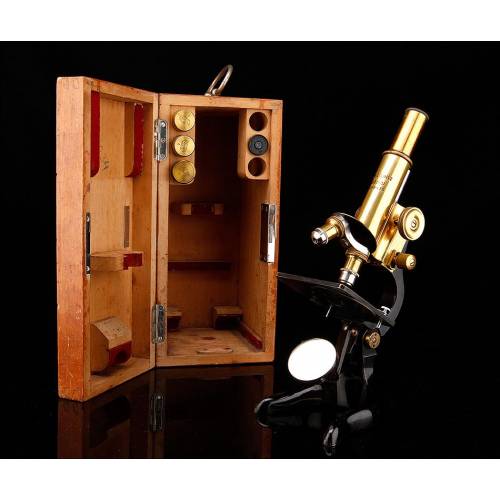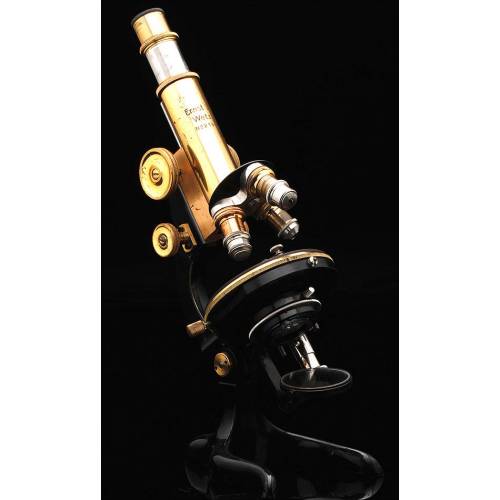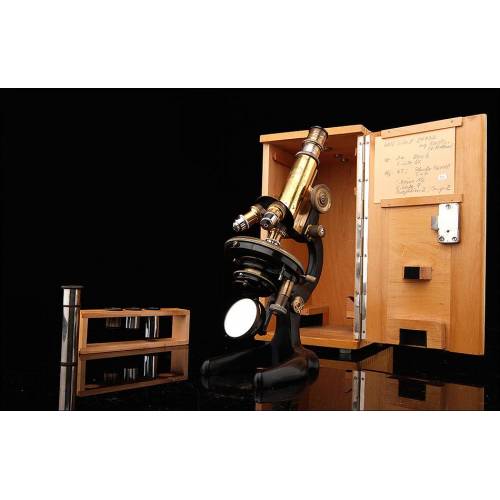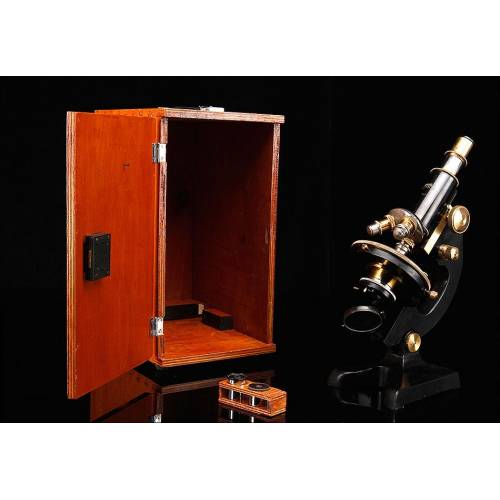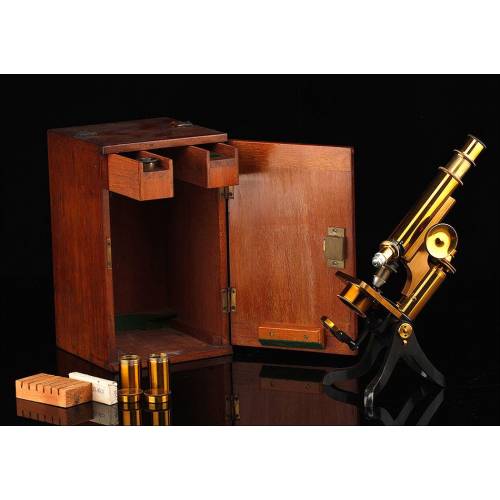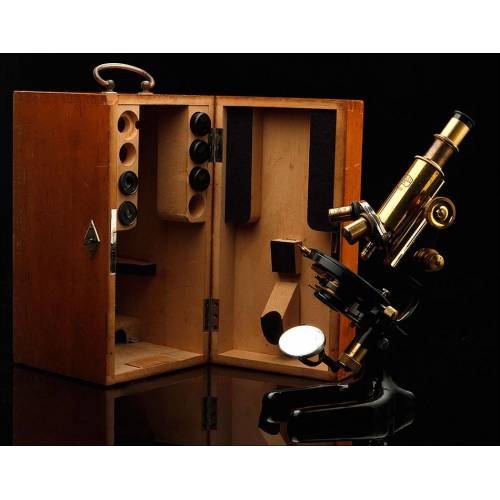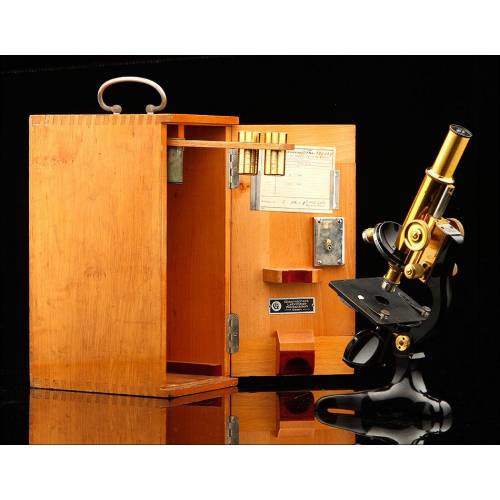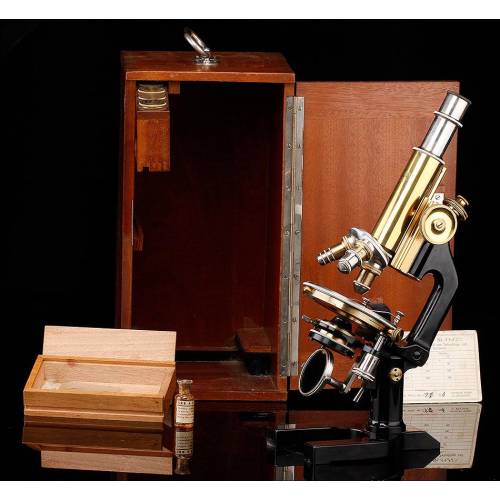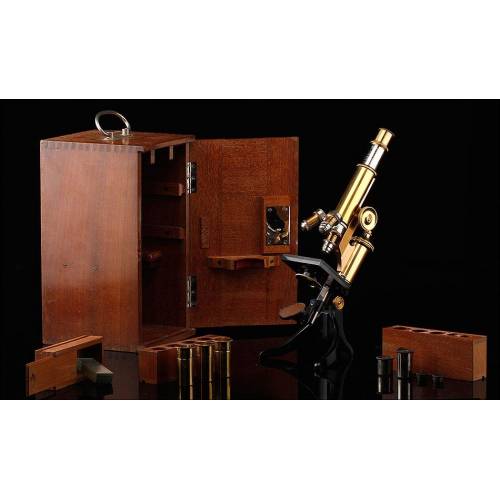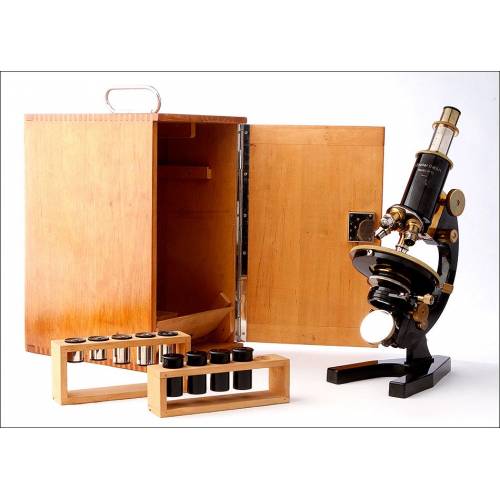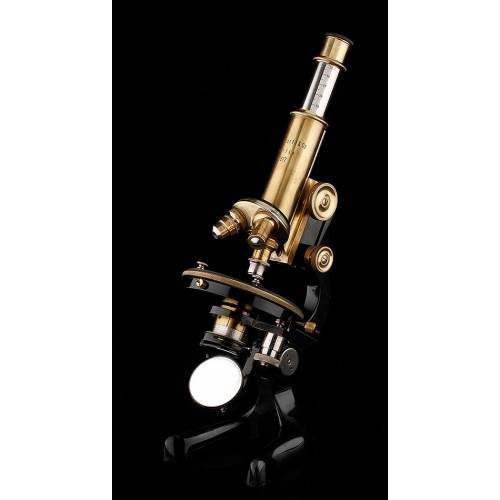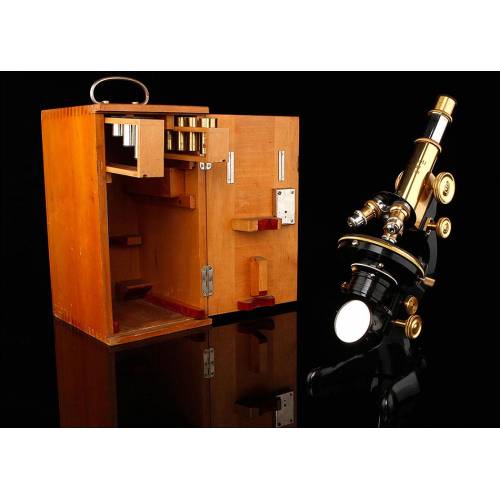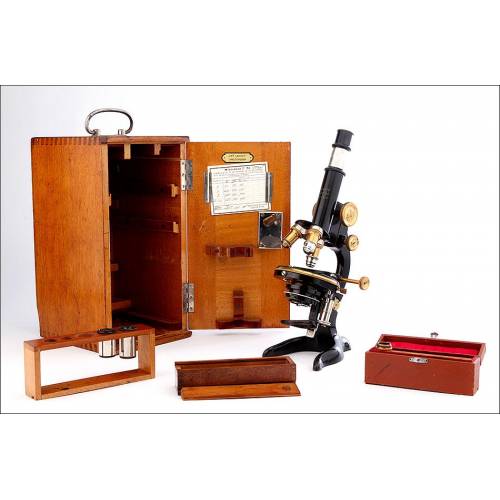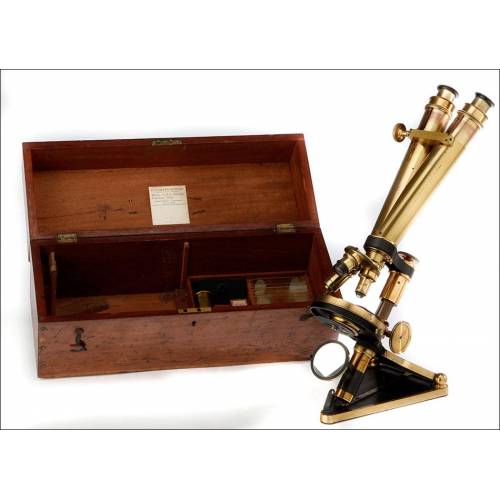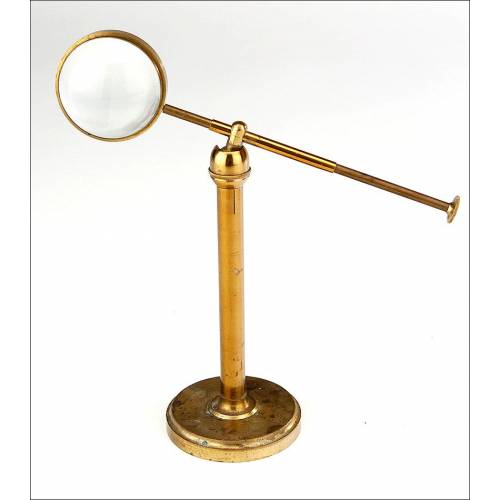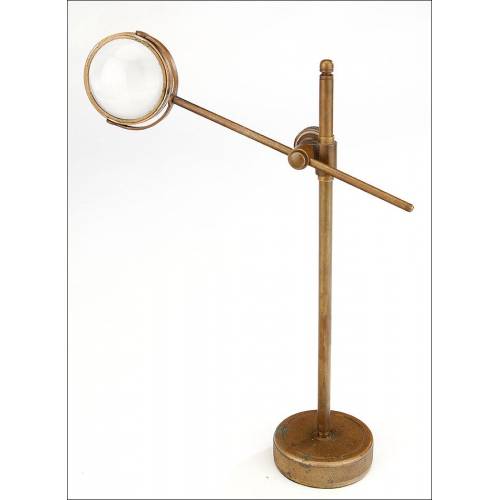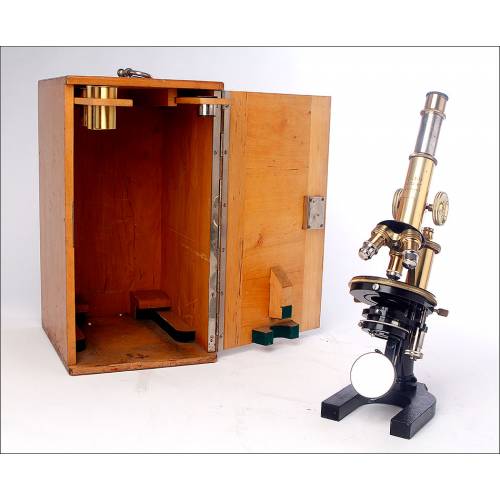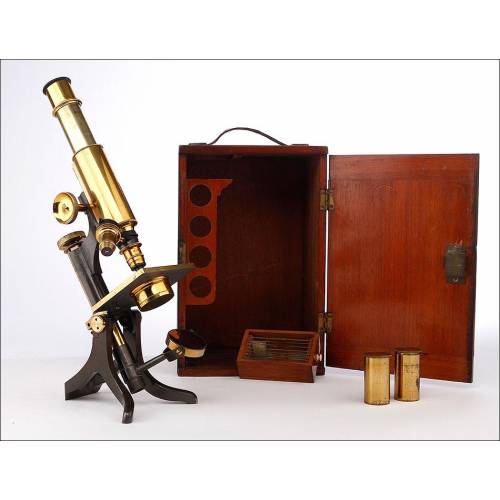C-414
Antique Microscope Nachet et Fils. France, Circa 1900
Complete antique microscope signed by Nachet in Fills. Set of 3 lenses and 3 eyepieces. In excellent condition and with case.
Sold!
Fine and rare antique Nachet et Fils microscope, greatly preserved and with a complete accessory set. It comes from France, where it was manufactured circa 1900. This fascinating device shows off a singular and attractive design which combined with its excellent condition turns it into a real collectors piece. The microscopes foot is made of black-lacquered cast iron and is composed of four inclined legs attached to the stage by a brass screw. The rest of the device is made of brass too: the metal looks great and preserves the original protecting lacquer, showing no signs of rust or wear at all. The microscope mounts a two-lens revolving nosepiece and remains in perfect working order. The brass turret bears the manufacturers name, NACHET ET FILS, and their original Parisian address too. The brand name NACHET is also engraved in the brass sleeves of the three objectives that come with the microscope, with 3, 5 and 7 magnifications each. As well as the objectives, the set also includes three eyepieces. The mahogany wooden case where the microscope and the accessories are stored is well preserved too and is original from the time. Inside we can see a paper sheet with the printed brand name and some information about the objectives and the eyepieces. Original and quite rare, this gorgeous Nachet et Fils microscope stands out for its excellent condition and fine working order. Measurements: Height: 13 in / 33 cm.Nachet Microscopes History Camille Sebastian Nachet was a Parisian optician who developed his career in the French capital city in the earlt 19th century. In the beginning, Nachet made lenses for the famous microscope maker Chevalier; but soon he opened his own microscope workshop in Rue Serpente 16, Paris. His first instruments had the same design as popular drum microscopes made by other manufacturers. In the mid-19th century (circa 1850) Nachet was succeeded by his son Alfred and the company was renamed Nachet et Fils. Nachet was once considered one of the three leading microscope and lens manufacturers of Paris, together with Chevalier and Oberhauser.

